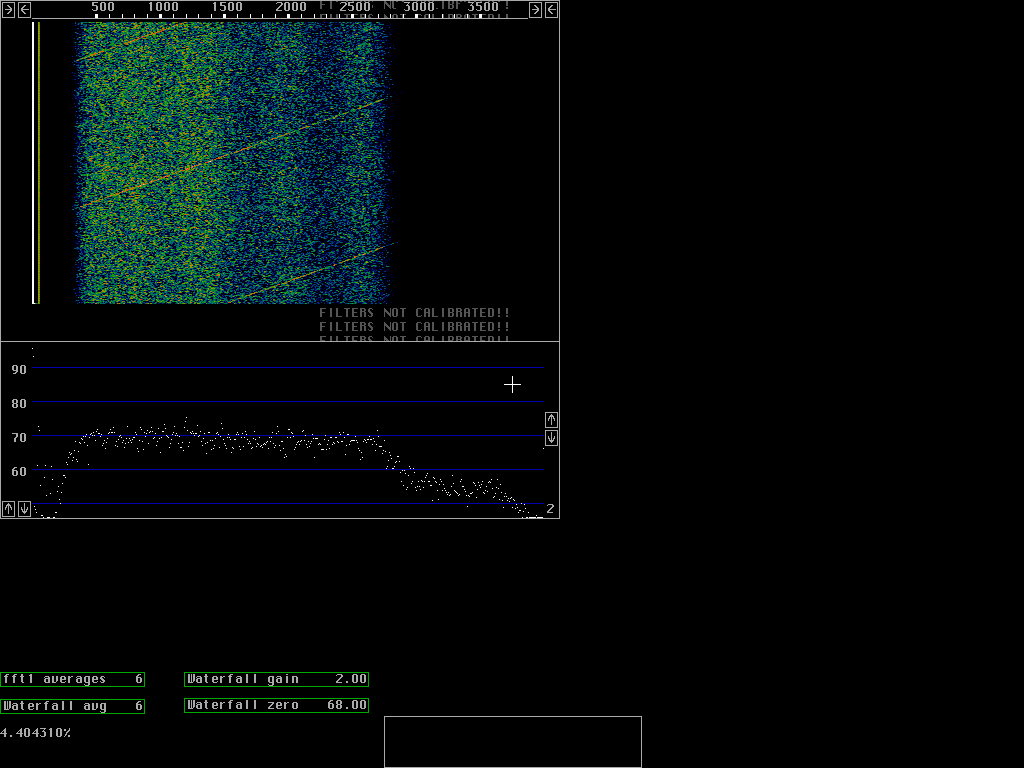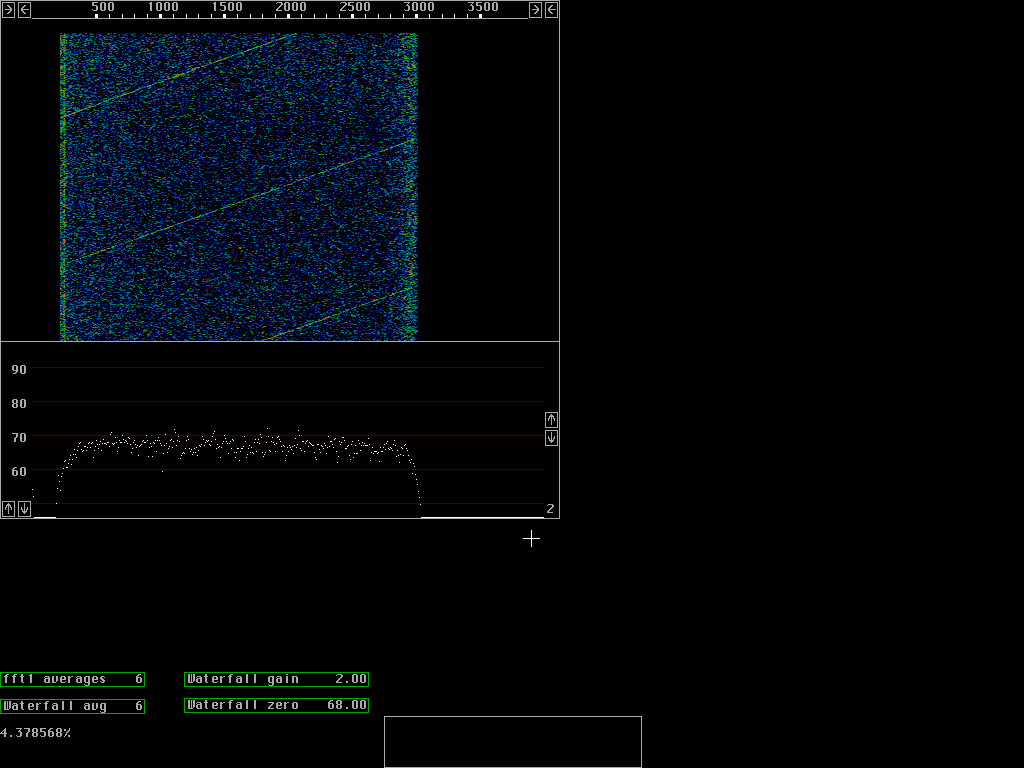FFT version differencies.For real transforms two different kinds of algorithms are supplied. Approximate conversion from real to complex followed by a complex fft and direct real to complex fft. The approximate algorithm is slightly faster and it contains a digital IIR filter that lifts low frequencies by about 6dB. After calibration the frequency response is flat anyway and there is no penalty for the IIR filter.
Uncalibrated performance of system with a TS520Fig.1. shows a weak signal that sweeps across the passband. There is not much averaging so the gain in the waterfall graph is modest. The useful spectrum range is 400 to 2700Hz.In this case the IIR filter of the approximate algorithms compensates a RC link used to suppress 50Hz that otherwise is too strong.
|

Fig 1. Frequency response of uncorrected TS520. A weak signal is sweeping across the passband and the time for one sweep is 50 seconds.
Calibrated performance of system with a TS520After running the calibration routine the useful passband, shown in fig. 2 is slightly wider, 300 to 2800Hz with full sensitivity. With about 1dB degradation the passband is extended to 250 and 3000Hz.
|

Fig 2. Frequency response of corrected TS520. A weak signal is sweeping across the passband and the time for one sweep is 50 seconds exactly the same as in fig. 1.
|
The noise floor is very flat but there is some extra noise in
the degraded regions because of the high gain in the digital processing
required to compensate for filter attenuation in the TS520.
It is clear that much more averaging may be used in order to find much weaker signals. It is possible to increase the gain of the waterfall graph by a factor of 10 corresponding to 100 times more averaging.
|